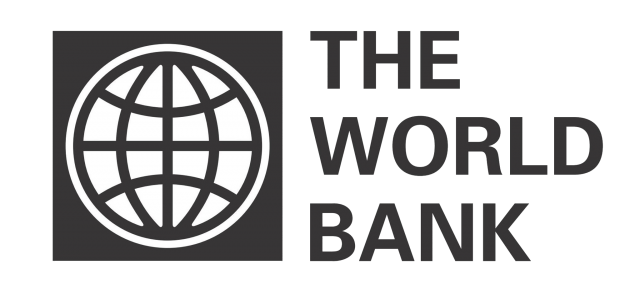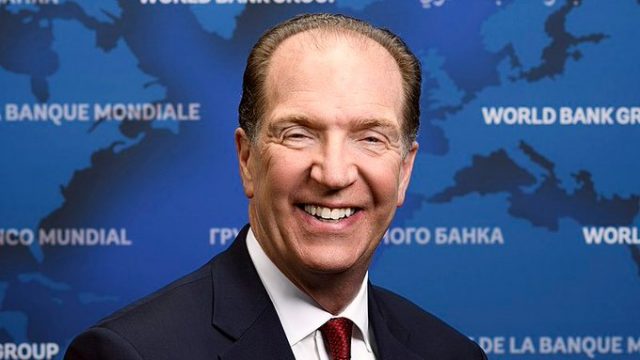Amid 5.6% Global Growth, Says Effects Of Pandemic Still Hamper Developing Economies
The World Bank Group, on Tuesday, released its June 2021 Global Economic Prospects, showing that the global economy could expand as much as 5.6% this year, in what it described as the fastest post-recession pace in 80 years.
This, it noted, will be propelled by strong rebounds from a few major economies, even as many emerging market and developing economies continue to struggle with the effects and aftermath of the COVID-19 pandemic.
For example, the report sees Nigeria’s economy growing at what it calls a modest 1.8% rate in 2021, from which it would edge up to 2.1% next year.
For this to happen, the WBG says oil prices must maintain a higher trajectory, and the government embarks on “gradual implementation of structural reforms in the oil sector, and a market-based flexible exchange rate management.
“The expected pickup is also predicated on continued vaccinations in the second half of this year and a gradual relaxation of COVID-related restrictions that will allow activity to improve. Nonetheless, output in Nigeria is not expected to return to its 2019 level until end-2022,” the report added.

Growth in South Africa is expected to be steeper at 3.5%, after last year’s sharp recession, before dropping to 2.1% next year, the report noted, hanging the recovery a gradual easing of COVID-19 restrictions and stronger metal prices.
“Major structural impediments to potential growth remain, including labour market rigidities, reflected in continuing large-scale unemployment,” the report added, even as it noted Angola’s dismal economic growth with a 0.5% projection in 2021, before soaring to 3.3% in 2022, also “on the back of stronger oil prices and government consumption. Output is, however, not envisioned to regain its 2019 level until toward the end of the forecast horizon.”
Growth in industrial commodity exporters—excluding Angola, Nigeria, and South
Africa, the report expects, will pick up to 2.4% in 2021-22; however, staying 1.5 percentage points below its 2010-19 average (Cameroon, Central African Republic, Democratic Republic of Congo).
One economy that could grow significantly this year, according to the June 2021 Global Economic Prospects, is Botswana, which is forecast to rebound to 5.6%, “on average, in 2021-22, as stronger metals and minerals prices, particularly for diamonds and nickel, rekindle activity after a precipitous collapse in the mining sector last year.”
The report also noted the danger of food, even as food price inflation has been exacerbated in some countries, besides the challenge of recent currency depreciations in some Sub-Saharan African countries, which may heighten inflationary pressures. “Food insecurity, rising conflicts, and violence against civilians, fueled by political unrest and economic disputes, could dampen the economic recovery,” it stressed, raising hopes for a gradual narrowing of fiscal deficits, as the pandemic is brought under control.
A further risk to the outlook, the report said, are rising conflicts and insecurity that could weaken recoveries, stressing concerns “that the humanitarian and economic toll of conflicts could dampen the projected growth pickup. Insurgencies and abductions in the Sahel, as well as political and electoral violence, could weigh more heavily on growth and erode the living standards of the most vulnerable people.”
Sub-Saharan African nations must also watch out for a sharp increase in long-term sovereign bond yields (that) could raise fiscal pressures in some SSA countries, since a “sudden rise in sovereign borrowing costs could exacerbate fiscal pressures in some countries.
Despite still-benign global financial conditions, sovereign borrowing costs have remained higher than before the pandemic in countries like Angola, Ghana, Nigeria, and South Africa the report added, lamenting that COVID-19 has left in its wake whirlwinds of budget deficits that have widened substantially, which are now expected to gradually narrow in Chad, Ethiopia, and Zambia.
It warns, however, that “high debt burden and fiscal pressures could become more acute and precipitate financial distress in some countries, especially if borrowing costs increase sharply in line with further possible increases in long-term yields on government bonds in advanced economies and major EMDEs.
“Heightened fiscal pressures could also delay government payments to suppliers and contractors, cause revenue shortfalls and bankruptcies among these firms, and increase the likelihood of financial stress
The envisaged growth, notwithstanding, the report said global output will come about 2% below pre-pandemic projections by the end of this year, warning that Per capita income losses will not be unwound by 2022 for about two-thirds of emerging market and developing economies.
Among low-income economies, where vaccination has lagged, the effects of the pandemic have reversed poverty reduction gains and aggravated insecurity and other long-standing challenges, the World Bank noted further.
Reacting to the report, World Bank Group President David Malpass, noted that “while there are welcome signs of global recovery, the pandemic continues to inflict poverty and inequality on people in developing countries around the world.

“Globally coordinated efforts are essential to accelerate vaccine distribution and debt relief, particularly for low-income countries. As the health crisis eases, policymakers will need to address the pandemic’s lasting effects and take steps to spur green, resilient, and inclusive growth while safeguarding macroeconomic stability,” he stressed.








